Preparing for Winter Protection
Preparing for Winter Protection
We’re (hopefully) a few months out from the coldest season, but it’s a perfect time to think about which plants might need protection from winter weather. This blog is about the various types of winter protection, and how we know if they are needed for our plants and gardens.
Do all plants need winter protection? Not at all. Those shrubs and trees that are known to be hardy in this area aren’t usually do just fine without any wrapping, extra mulch or coating of anti-desiccant sprays. If your perennials, shrubs and trees are listed as being hardy in a Zone 6 or colder, they should sail through even the coldest weather. That said, there are some plants you might want to offer a bit of shelter to.
- Broadleaf evergreens such as holly or rhododendrons that have been drought stressed during the past two summers might benefit from an anti-desiccant spray. Wilt Pruf is the most commonly used product. You spray the leaves in October or November on days when the temperatures are above 50° and this helps these plants retain moisture into the winter.
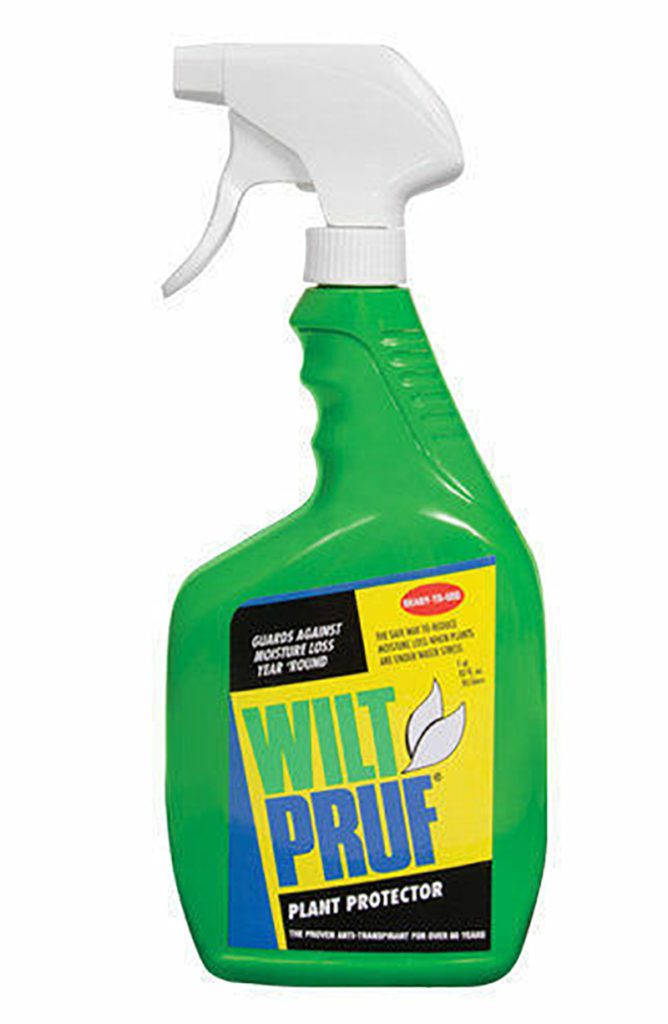
- Protection isn’t for keeping plants warm. We use mulches and burlap to keep the air calm around plants so that the cold winter winds don’t blow them too much. In some cases, we use these to keep plants evenly cold, since the seesaw of warming and cooling back and forth can sometimes be more harmful than a steadily cold winter. Most plants don’t emit heat, so it’s not that we try to hold warmth around them. We’re just looking to provide air and temperature stability.
- Marginally hardy perennials can benefit from an application of a light mulch such as hay, straw, pine needles or salt-marsh hay. If you’re growing perennials listed as being hardy in a warm zone 7, cover them in late December with one of those mulches, piling it to about 6″ thick around the stems. Don’t cut the plant down first…you can clean it up and cut it down in the spring when you move the mulch aside in early May. Don’t use a heavy mulch such as bark, or one that will mat down over the winter such as oak leaves. You want a mulch that holds air spaces around the plant and doesn’t get compressed over the winter months.
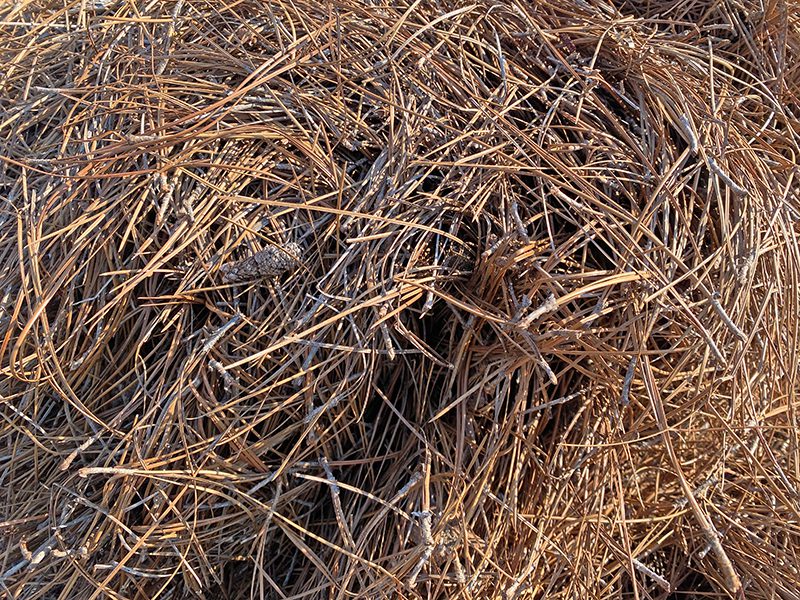
- Roses: If you’re growing landscape/shrub roses such as those in the Drift, Knockout, Flower Carpet or Oso Easy series, you don’t have to protect them. But if you’re growing hybrid teas, you might want to pile some compost around the base to shelter the graft through the winter. The added benefit of this is that in the spring you can just pull that compost away from the base of the roses and spread it over the surface of the soil around the plant. You’ll get winter protection and soil amendment at the same time. Use one bag of the Coast of Maine lobster compost per plant, and you’ll have the happiest roses on the block.
- Burlap? Here’s what you need to know: burlap can be beneficial as a wind break, but you don’t want to wrap it directly on a plant. This fabric can end up wicking moisture out of a plant’s foliage when it touches the leaves. Use stakes in the ground to keep the burlap about two inches away from the leaves and stems.
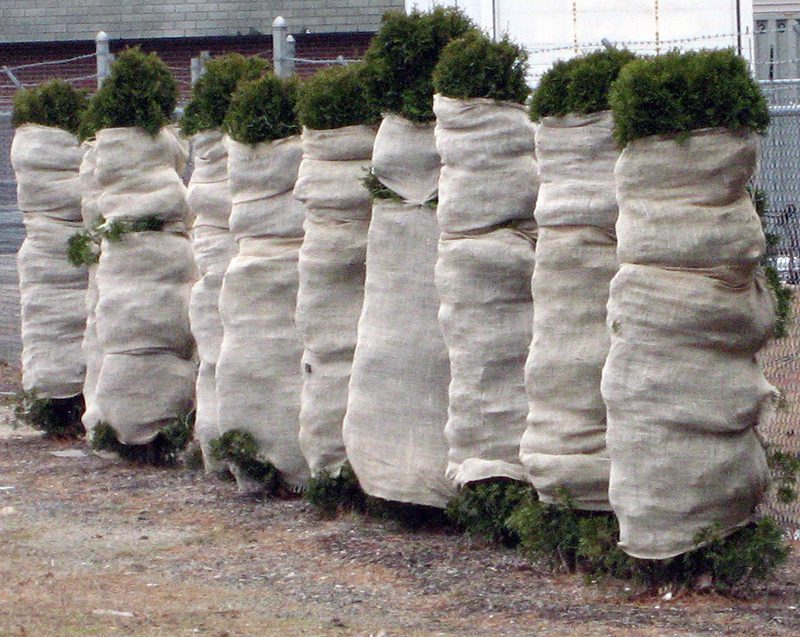
- Burlap can help block wind and contain other mulch such as salt marsh hay. Don’t use tarps or other non-permeable fabric because these inhibit the airflow and can cause plants to heat up too much once the sun warms in February.
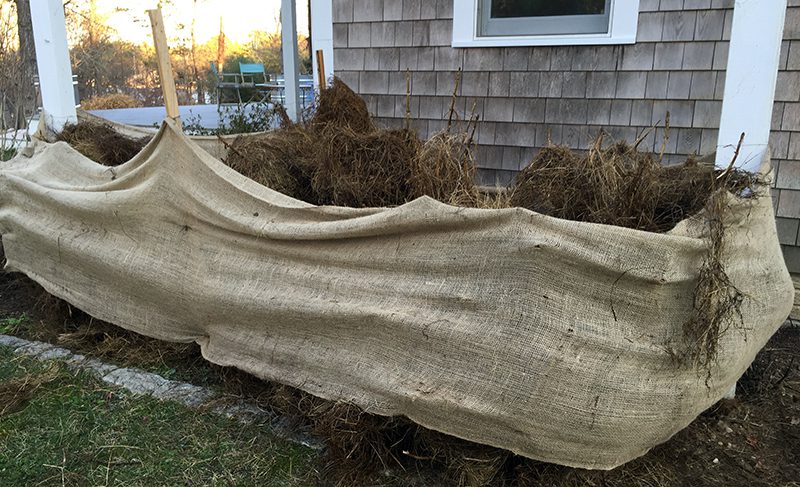
- Don’t put winter protection around a plant too early in the fall. That burlap or hay creates a cozy place for mice and voles to set up their winter campsites! They can make a sweet home next to your plant’s stems and trunks, and they not only have protection from their enemies, but they also have your plants to munch on through the season. Buy your salt-marsh hay or pine needles soon, but spread these in late December or even right after the holidays, after the critters have found other places to shelter for the winter.
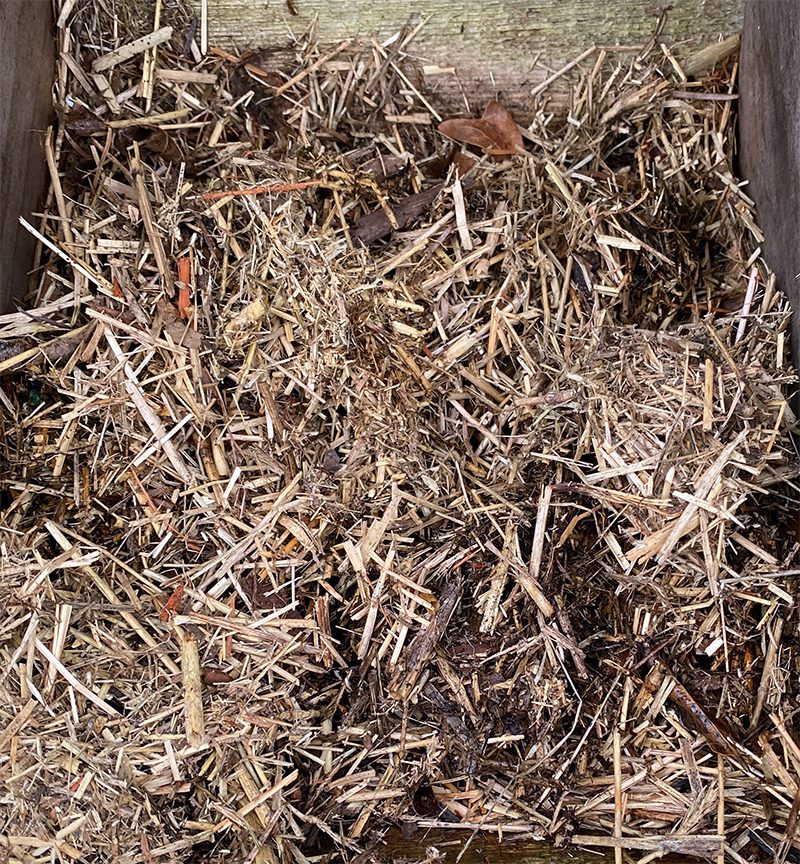
- Hydrangea protection? One of the questions we hear most is if wrapping, spraying or mounded hay will protect the blue hydrangea buds. Unfortunately not. If your hydrangeas are in an especially exposed location where the cold winter winds hit them and zap the germ of next year’s flowers, you can try putting up a few layers of burlap on stakes to break the wind. But know that if temperatures go into the single digits, no cloth, hay or other covering will keep the hydrangea buds alive.
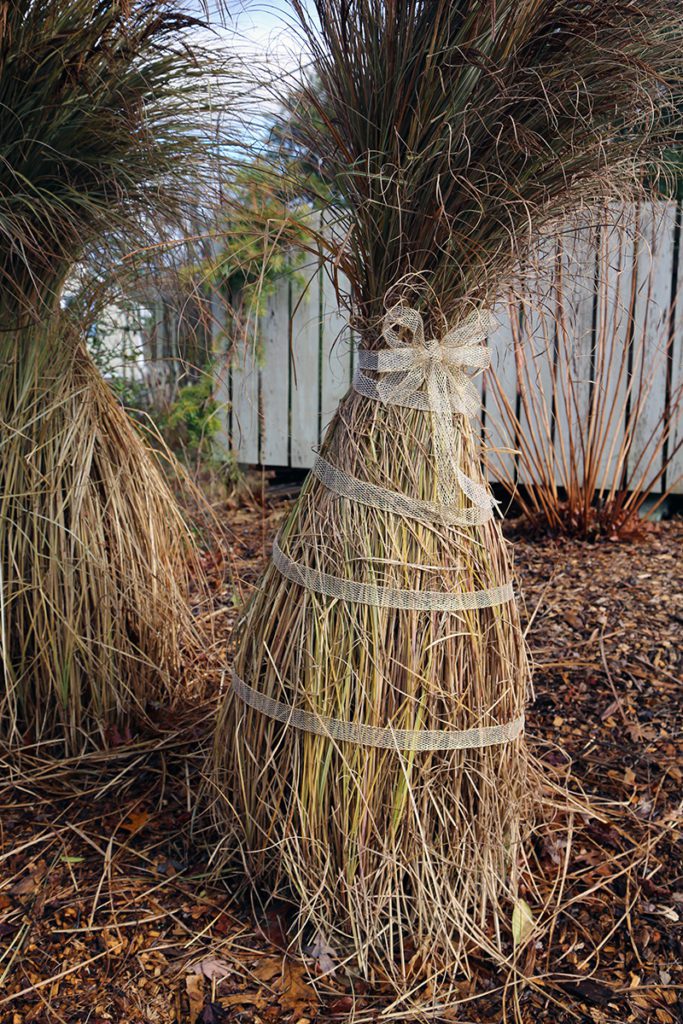
Subscribe To Our Newsletter
Sign up for our weekly email about sales and events.
